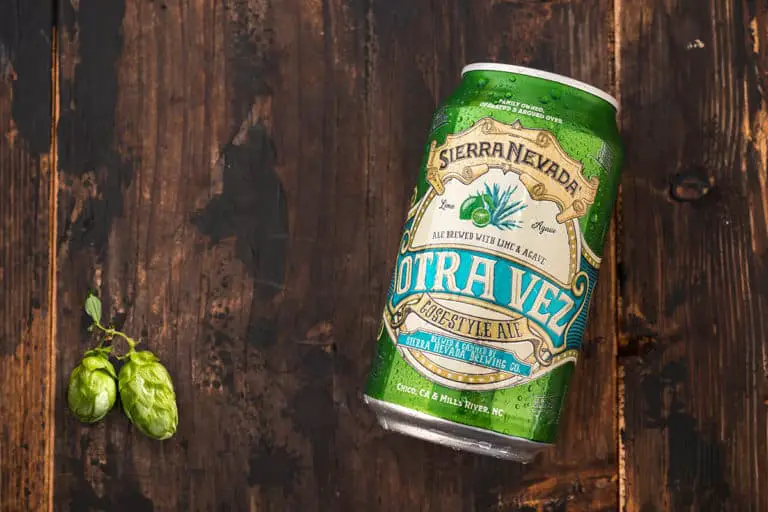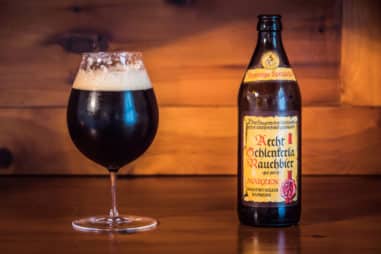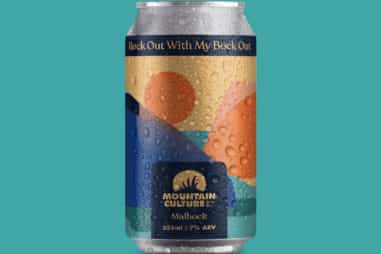Gose beer is a symphony of sour, sweet, and salty flavors. With an emphasis on the salty kicker.
The United States has taken a liking to brew Gose for its relatively easy brewing. And for folks who are not a fan of “bitter” beers, this makes for a good entry to the world of beer.
What Makes a Beer a Gose?
A Gose is a combination of two distinct elements. First, it must have a tartness that reminds you of fermented food and drinks like yogurt. Second, it must have a kick of saltiness to it: next-door neighbors to briny. Without this combination, you might be drinking something else.
Where Is Gose Beer From?
Gose beer was first brewed in early 13th century Germany. More specifically, it was concocted in the bustling mining town of Goslar.
Goslar is a historic town in Lower Saxony. In fact, it is a UNESCO World Heritage Site.
Is Gose a German Name?
Since Gose is from Goslar, and Goslar is a town in Germany, you would reckon it is German. And, if you dig a little deeper, Gose is also used in Germanic family names. However, the name is not exclusive to Germans so it is not definitive.
There is a river named Gose beside the town, so the German name is quite likely.
How Do You Pronounce Gose Style Beer?
If you listen to some google translate audio, it sounds like “Gow-zeh.” Some people try to simplify it by saying it rhymes with “hose” with an “uh” suffix. Or even easier, say “goes-uh” as in “let’s goooo-suh!” Whether it is correct or not, well, you should ask a native.
What Kind of a Beer Is a Gose?
If Sour beer and Wheat beer had a baby, you would fundamentally get Gose. One could argue that Gose deserves a totally different classification. Even more so with its unique ingredients.
Is a Gose a Lager or an Ale?
Ales are pitched with top-fermenting yeasts and are fermented warm just like Gose. Since virtually all beers are either Ales or Lagers, you have got yourself an Ale.
Is Gose an IPA?
Gose is shy when it comes to hops, unlike IPAs that like to show off their hoppy flavors. Gose beer restrains the malt’s sweetness more with the salty and sourness factors.
How Do You Describe a Gose?
Being an unfiltered wheat beer, Gose has that cloudiness to it. The kind of creamy clouds you would see in all wheat beers. It also has good fizz to give you a noteworthy foam head.
What Color Is Gose?
Traditionally, Gose presents a whitish haze with a yellow to deep gold-colored liquid. The thing is, some brewers have taken the colors to new heights.
The color of the beer is mostly under the influence of its grains. But, Gose beers have the flexibility to darken, depending on specific ingredients.
Is Gose a Dark Beer?
Classic Gose is not a dark beer. If you want dark beer, Gose is capable of adapting for you.
To get dark beers, you will need darkly roasted malts in your blend. You also have another avenue of getting the shade you want from specific salts.
What Is a Black Gose Beer?
Black and blackish colors express a Black Gose. Those kinds of beer blend any one or a combination of several ingredients. It may include chocolate wheat, smoked sea salt, inactivated charcoal, and the like. The sky is the limit, basically.
Is Gose a Light Beer?
If you take a swig of Gose, you will experience the lightness of the beer. Its bubbly character helps clear your palate to reinforce the light-bodied beer feel.
Its low alcohol content will not beat you senseless in a single bottle. And the salty finish balances your hydration levels like an electrolyte. Saltwater is a good electrolyte by the way. Perfect for dealing with hangovers… at least in theory.
Does Gose Taste Like Beer?
When you mean beer that has that distinct bitterness, then Gose does not rely on that. Some blends would attempt at reminding you of the hops.
Gose beer focuses on the other spectrums of taste: spectrums of sour and saltiness.
What Is Gose Beer Similar to?
If you have tried Sour unfiltered beers, then you will have some idea of what you will get. If you have tried unblended Lambics, Gueuze, and Berliner Weisse, they play on the same field.
What Does a Gose Taste Like?
Good Gose has a noticeable sourness to it. Brewers like to play around with the sour aspect so you might get something insane. It would border on fruity vinegar or those light-bodied energy drinks.
You will also get citrusy characters from the coriander. It varies from lemon and grapefruit notes.
Bad Gose would taste like a cold sweat, all the way to brackish water.
Are Gose Beers Bitter or Sweet?
Gose has just a touch of its bittering agent. The agent is mostly used to keep the microbes in check.
The malt provides the sweet essence of the beer. The salt manages the sweetness levels the way hops would.
Is Gose Salty?
You would outright detect the salinity of a Gose. It should not be overpowering though. Think along the lines of margaritas. The salt creates the balance of the otherwise overwhelming base ingredients.
Are All Gose Beers Salty?
Gose beers are not created equally salty. Some non-traditional brewers like to take things to extremes. You must make sure to read the product descriptions and watch out for those types. Not unless you want a ride on the wild side.
Are Gose Beers Hoppy?
Hoppy beers put emphasis on the hop flavor and aroma. On the other hand, Gose casts hops as a supporting character. It has muted hop flavors and aroma.
Hops works in the background as the microorganism police. It acts more as a freshness preservative than a flavoring adjunct.
Is a Gose a Sour Beer?
Gose beer is Sour Beer alright. To be precise, it is an instance of the sour wheat beer class.
It is made with souring microflora, similar to those found in the wild.
Are Gose and Sour Beers the Same?
Gose used to be the same as technical Sour beers. The original brewing of Gose is loyal to Sour beers by using wild souring agents. Eventually, Gose moved away from spontaneous fermentation.
What Is the Difference Between a Gose and a Sour Beer?
Thanks to capitalism, more efficient processes developed the technical distinction between the beers. The processes involved using specific top-fermenting yeasts and lactic acid bacteria.
Does Gose Mean Sour?
The name “Gose” for the beer was derived from the river near Goslar of the same name. The circumstances with the river tend to point to the naming.
Historically, the river provided the water for beer production. It also happened that the region is rich in mineral ores. One of the abundant elements was salt, which flowed with the groundwater. And voila! The salty beer was born.
How Sour Is a Gose?
This would depend on the brewer’s recipe, but generally, the sourness is around a moderate level. Also, you might perceive sourness differently from others. You should try different brews and see what speaks to you.
Is Gose Always Sour?
Some brewers advertise mild tartness, but it is still sour regardless. It is a kind of sour beer after all.
Gose beer is an alternative for those who hate bitter beer.
What Makes a Gose Sour?
Lactobacillus bacteria is the most common requirement when it comes to souring. But in modern times, most U.S. craft brewers use lab-grown Lactobacillus strains or acids.
Traditionally, Goslar brewers would use spontaneous fermentation practices. This created a more complex sourness.
What Makes a Gose Different From Other Beers?
You would labor needlessly to find other beers with salt as a centerpiece. That said, some people tend to have salt in their beers and cocktails more as an option or afterthought.
How to Serve Gose Beer
The common glass when serving Gose is a “Stange.” A Stange is a tall and thin cylindrical glass. You could also use bowl-shaped glasses, which are typical for sours.
When you start pouring, you should follow the 45° angle glass tilt rule. You should always maintain a slow and steady pour to avoid a catastrophic mess.
You can also serve it with a shot of flavored syrup if you happen to disagree with the sourness level.
What Temperature Should Gose Be Served at?
Gose arguably is better in the 45 to 55°F (7 to 13°C) range. General ale serving temperatures fall in the range of 38 to 55°F (4 to 13°C).
And the general rule is to serve light-bodied beer colder than full-bodied ones. You should lower it by a few degrees to consider the warming caused by the room and your hands.
Are You Supposed to Drink Gose Warm?
If your definition of “warm” is 45 to 55°F (7 to 13°C), then drink Gose warm. Gose is chock-full of flavors, so a warm beer works wonders. Warmth accentuates flavors while cold diminishes them.
What Do You Eat With Gose Beer?
Obviously, you should avoid already salty dishes. It is perfect for whetting your appetite. Pair your Gose with anything that does well with added saltiness.
- Fish
- Deep-fried food
- Shellfish
- Egg dishes
- Fatty beef cuts
Do Gose Beers Have Gluten?
Sour Wheat beers like Gose have wheat, and wheat has gluten. It is kind of tough to get gluten-free Gose without changing the very nature of the beer.
If you are sensitive to gluten, there are alternatives to wheat like sorghum. Brewers label these alternatives as Gose-style beers.
Is Gose Brewed With Salt?
Gose beer began its history in the saline river near Goslar. Without the saltwater, there would be no Gose beer. It probably would just be another run-of-the-mill Sour Wheat beer.
What Kind of Salt Do You Use for Gose?
If you do not live near a salty body of flowing water, sea salt is the next best thing. You can use any salt, even the Himalayan ones. Do try to avoid common table salt. It has all those nasty additives that might leach a chemical flavor.
Are There Hops in Gose?
Ever since the discovery of hops, beers generally went on the hops bandwagon. Gose beer is one of those beers. But even if Gose uses hops, it uses it more for beer preservation than flavor.
What Is in a Gose?
Your basic Gose comprises of the following:
- Grains: Pilsner malt and wheat pretty in a 40-60 or 50-50 ratio.
- Hops: Just a touch of hops for beer stability.
- Yeast: German ale strains will work best here.
- Lactic acid bacteria: Lactobacillus strains are the default option. Some brews add straight-up food-grade lactic acid.
- Salt and Coriander: A few ounces go a long way.
How Much Lactic Acid Do I Need for Gose?
One ounce (28 grams) of lactic acid should work for starters. You should want to measure your acidity levels as you brew. You can use litmus paper or a pH meter for measurements.
Lactic acid is only one of many options. You could try acidulated malt, lactobacillus, or do a sour mash.
What pH Should a Gose Be?
Your brew’s pH levels should be around 3.2 to 3.6. The sourness is dependent on your own preference. Target a compliment to the beer. Avoid making your own vinegar.
How Much Sea Salt Is in a Gose?
A five-gallon batch would need about half to an ounce (14–28 grams) of salt. If you will brew your own, start small then work your way up according to your taste. After all, it is harder to reduce salt than to add salt.
How Much Coriander Do You Use for a Gose?
A five-gallon batch would need about half to an ounce (14–28 grams) of finely ground coriander seeds. This amount should give you the appropriate level of flavor and fragrance.
How to Brew a Gose
The simpler and faster way to brew Gose is through Kettle Souring.
- Mash your grains for 60 minutes at 150°F (65°C).
- Sparge into your kettle.
- Pasteurize the wort by boiling it for 10 to 15 minutes.
- Chill the wort to 90°F (32°C).
- Acidify the wort with lactic acid. Target an initial pH of 4.2.
- Pitch the lactobacillus.
- Seal the kettle.
- Purge the kettle’s headspace with carbon dioxide.
- Maintain the kettle temperature at 90°F (32°C) for 12 to 36 hours.
- Measure the pH every 12 hours until you reach a pH of 3.2 to 3.6.
- Boil the wort.
- Add hops.
- Add crushed coriander seed and salt with 10 minutes left in the boil.
- Chill the wort to 68°F (20°C).
- Sanitize your fermenting vessels and tubes.
- Transfer to the fermenter.
- Add the yeast.
- Ferment for 1 to 2 weeks. Check your final gravity every week.
- Carbonate in a keg or bottle condition.
How Long Does It Take to Brew a Gose?
You should brew and ferment your Gose within one to two weeks. Remember that your environmental conditions may speed up or slow down the process. You should always check with your pH meters and hydrometer at fixed intervals.
Can You Age a Gose?
If you decide to age a Gose, you can. Some brewers age it around three to five months. Gose is not really something you age compared to other Sours. But as long as you work cleanly, you could store it for a while.
Is Gose Beer Good for You?
Probiotics found in fermented food and drinks are one of the keys to good gut health. Gose is obviously fermented, with arguably the most famous microbe, Lactobacillus. They bang up toxins and viruses like a champ. They also help with the regulation of your immune system.
But do not go drafting whole racks of bottles and justify your actions with a “this is healthy” slogan. Alcohol is still alcohol so drink responsibly.
Who Makes the Best Gose?
The world’s best Gose two years in a row is NBeer’s “Beijing GOSE Modern” from China. You heard that right, the best is no longer limited to the western hemisphere.
Beijing GOSE Modern has the following characteristics:
- See its color hues akin to pale lemons.
- Whiff its scent of tropical fruits, peaches, and a hint of jasmine.
- Taste its flowery notes upon start, then it finishes with a fruity menthol. Interspersed is a pleasant maltiness.
If you are looking for an option in the US, get your hands on a Westbrook Gose. The majority of rankings mention this brand of Gose. It is brewed with grey sea salt that packs a salty punch.







